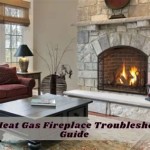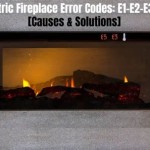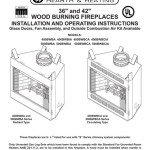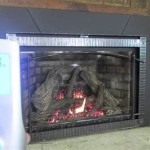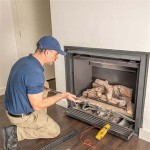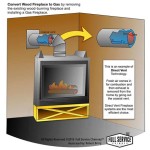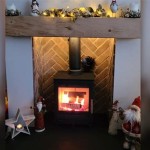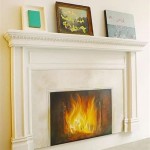Gas Fireplace Basement Venting: A Comprehensive Guide
Installing a gas fireplace in a basement presents unique challenges, primarily related to ensuring proper and safe venting of combustion byproducts. Unlike above-ground installations, basements often lack natural ventilation and have different air pressure dynamics, making proper venting crucial to prevent carbon monoxide poisoning and maintain air quality within the home. Selecting the appropriate venting method and adhering to local codes are paramount for a safe and efficient gas fireplace installation.
This article aims to provide a comprehensive overview of gas fireplace basement venting, covering various venting options, code considerations, installation best practices, and troubleshooting common issues. Understanding these factors is essential for homeowners and contractors alike to ensure a successful and safe gas fireplace installation in a basement environment.
Understanding Gas Fireplace Venting Categories
Gas fireplaces are categorized based on their venting requirements, influencing the type of venting system that can be used in a basement setting. Understanding these categories is the first step in planning a gas fireplace basement installation.
Direct Vent (DV) Fireplaces: Direct vent fireplaces are sealed combustion units that draw air from outside the home for combustion and exhaust combustion gases directly outside via a co-axial or concentric vent system. This system involves one pipe inside the other, with the inner pipe exhausting gases and the outer pipe bringing in fresh air. Direct vent fireplaces are often preferred for basement installations due to their sealed nature, which minimizes the risk of indoor air contamination and allows for flexible installation options. The vents can be run horizontally through an exterior wall or vertically through the roof, depending on the model and installation parameters.
B-Vent Fireplaces: B-Vent fireplaces, also known as natural vent fireplaces, rely on room air for combustion and exhaust gases through a dedicated B-Vent pipe that rises vertically to the outside. These fireplaces are less common in basement installations because they require a continuous vertical vent run to ensure proper draft. The lack of a suitable chase or the presence of obstructions can make B-Vent installations impractical in basements. Furthermore, B-Vent fireplaces are more susceptible to backdrafting if the chimney draft is insufficient or if negative pressure exists in the basement.
Vent-Free Fireplaces: While marketed as vent-free, these types of fireplaces are now frequently restricted by local codes and regulations due to concerns about indoor air quality. These fireplaces release combustion byproducts, including water vapor, carbon dioxide, and small amounts of carbon monoxide, directly into the living space. In a poorly ventilated basement, these emissions can quickly degrade air quality and pose health risks. Many jurisdictions prohibit the installation of vent-free fireplaces or require the use of oxygen depletion sensors (ODS) and carbon monoxide detectors as safety precautions. Despite the convenience of not requiring venting, the potential health risks often outweigh the benefits, especially in a confined basement environment.
Key Considerations for Basement Venting
Several factors must be considered when planning a gas fireplace basement venting system to ensure safety and compliance with local building codes.
Building Codes and Regulations: Local building codes vary widely regarding gas fireplace installations, particularly in basements. It is imperative to consult with the local building department or a qualified HVAC professional to understand the specific requirements in the area. These codes may dictate the type of venting system allowed, minimum clearances to combustible materials, and required safety features such as carbon monoxide detectors.
Proper Vent Sizing and Slope: The diameter of the venting pipe and its slope are critical for ensuring proper drafting and preventing condensation buildup. The vent size must be appropriate for the fireplace's BTU input rating, as specified by the manufacturer. Improper sizing can lead to inadequate venting and the risk of carbon monoxide poisoning. The vent pipe should also have a slight upward slope (typically ¼ inch per foot) to allow condensation to drain back into the fireplace where it can be evaporated or collected.
Combustion Air Supply: For fireplaces that utilize room air for combustion (like B-Vent or, in some cases, even direct vent models installed with specific accessories) adequate combustion air must be available. Basements can often be relatively airtight, which can starve the fireplace of necessary air. This can lead to incomplete combustion, resulting in higher levels of carbon monoxide production. Provisions for supplying fresh air, such as an outside air inlet or a passive vent, should be considered to ensure proper combustion and prevent negative pressure issues within the basement.
Venting Methods and Installation Best Practices
The choice of venting method depends on the type of fireplace, the basement layout, and local building codes. Following installation best practices is crucial for a safe and efficient venting system.
Horizontal Venting for Direct Vent Fireplaces: Horizontal venting involves running the vent pipe directly through an exterior wall. This is a common and often convenient option for basement installations, especially when vertical venting is not feasible. The vent terminal must be located according to manufacturer specifications and local codes, ensuring adequate clearance from windows, doors, and other openings to prevent exhaust gases from re-entering the building. Proper sealing of the vent penetration through the wall is essential to prevent air leaks and water damage.
Vertical Venting for Direct Vent Fireplaces: Vertical venting involves running the vent pipe vertically through the roof. This method typically provides better draft and is less likely to be affected by wind conditions. However, it may require more extensive construction to create a chase for the vent pipe and ensure proper sealing and weatherproofing of the roof penetration. Vertical venting should be installed with appropriate flashing and storm collars to prevent water intrusion.
B-Vent Installation Considerations: If a B-Vent fireplace is permitted and feasible, it must be installed with strict adherence to manufacturer specifications and local codes. The vent pipe must have a continuous vertical run without any horizontal offsets or restrictions. The chimney must extend above the roofline to provide adequate draft. Regular inspection and cleaning of the chimney are essential to prevent blockages and ensure proper venting. A barometric damper may be required to regulate draft and prevent over-firing of the fireplace.
Professional Inspection: Regardless of the venting method chosen, it is strongly recommended to have the installation inspected by a qualified HVAC professional or a certified gas appliance installer. A professional inspection can identify potential safety hazards and ensure compliance with all applicable codes and regulations. This is a crucial step in ensuring the safe and reliable operation of the gas fireplace in the basement environment.

Comfortflame
Gas Fireplace Venting Explained Heat Glo

Comfortflame
Gas Fireplace Venting Explained Heat Glo

Montigo Fireplace Direct Vent Installation

Direct Vent Vs Natural Www Mygasfireplacerepair Com

Gas Fireplace Vent Inspecting Hvac Systems Internachi Forum

Do It Yourself Guide Maple Mtn Fireplace

My Mendota Gas Fireplace Renovation Part 2 The Original Flame

Venting A Gas Fireplace Through Existing Chimney Direct Vent Inserts
Related Posts

